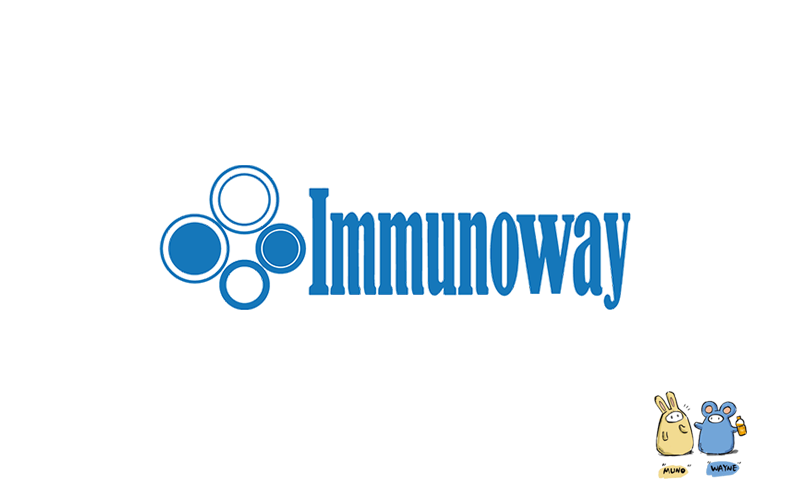
Catalog: YM4238
Size
Price
Status
Qty.
200μg
$600.00
3 weeks
0
100μg
$340.00
3 weeks
0
40μg
$190.00
3 weeks
0
Add to cart


Collected


Collect
Main Information
Target
CD80
Host Species
Mouse
Reactivity
Human
Applications
FC, ELISA
Conjugate/Modification
Unmodified
Detailed Information
Recommended Dilution Ratio
ELISA 1:5000-100000; Flow Cyt 1-2μg/Test
Formulation
Phosphate-buffered solution
Specificity
This recombinant monoclonal antibody can detects endogenous levels of CD19 protein.
Purification
Recombinant Expression and Affinity purified
Storage
-15°C to -25°C/1 year(Do not lower than -25°C)
Concentration
Please check the information on the tube
Modification
Unmodified
Clonality
Monoclonal
Clone Number
PTR1379
Isotype
IgG1,Kappa
Related Products
Antigen&Target Information
Immunogen:
Purified recombinant Human CD19
show all
Specificity:
This recombinant monoclonal antibody can detects endogenous levels of CD19 protein.
show all
Gene Name:
CD19
show all
Protein Name:
B-lymphocyte antigen CD19 (B-lymphocyte surface antigen B4) (Differentiation antigen CD19) (T-cell surface antigen Leu-12) (CD antigen CD19)
show all
Other Name:
B-lymphocyte antigen CD19 ;
Cd19 ;
Differentiation antigen CD19 ;
CD19 ;
Antibody deficiency due to defect in CD19 antibody ;
Antibody deficiency due to defect in CD19 ;
included antibody ;
AW495831 antibody ;
B lymphocyte antigen CD19 antibody ;
B lymphocyte surface antigen B4 antibody ;
B-lymphocyte antigen CD19 antibody ;
B-lymphocyte surface antigen B4 antibody ;
B4 antibody ;
CD19 antibody ;
CD19 antigen antibody ;
CD19 molecule antibody ;
Cd19 protein antibody ;
CD19_HUMAN antibody ;
CVID3 antibody ;
Differentiation antigen CD19 antibody ;
Leu 12 antibody ;
Leu-12 antibody ;
Leu12 antibody ;
MGC109570 antibody ;
MGC12802 antibody ;
T-cell surface antigen Leu-12 antibody ;
Cd19 ;
Differentiation antigen CD19 ;
CD19 ;
Antibody deficiency due to defect in CD19 antibody ;
Antibody deficiency due to defect in CD19 ;
included antibody ;
AW495831 antibody ;
B lymphocyte antigen CD19 antibody ;
B lymphocyte surface antigen B4 antibody ;
B-lymphocyte antigen CD19 antibody ;
B-lymphocyte surface antigen B4 antibody ;
B4 antibody ;
CD19 antibody ;
CD19 antigen antibody ;
CD19 molecule antibody ;
Cd19 protein antibody ;
CD19_HUMAN antibody ;
CVID3 antibody ;
Differentiation antigen CD19 antibody ;
Leu 12 antibody ;
Leu-12 antibody ;
Leu12 antibody ;
MGC109570 antibody ;
MGC12802 antibody ;
T-cell surface antigen Leu-12 antibody ;
show all
Background:
CD19 molecule(CD19) Homo sapiens Lymphocytes proliferate and differentiate in response to various concentrations of different antigens. The ability of the B cell to respond in a specific, yet sensitive manner to the various antigens is achieved with the use of low-affinity antigen receptors.This gene encodes a cell surface molecule which assembles with the antigen receptor of B lymphocytes in order to decrease the threshold for antigen receptor-dependent stimulation. [provided by RefSeq, Jul 2008]
show all
Function:
Functions as coreceptor for the B-cell antigen receptor complex (BCR) on B-lymphocytes. Decreases the threshold for activation of downstream signaling pathways and for triggering B-cell responses to antigens . Activates signaling pathways that lead to the activation of phosphatidylinositol 3-kinase and the mobilization of intracellular Ca(2+) stores . Is not required for early steps during B cell differentiation in the blood marrow . Required for normal differentiation of B-1 cells (By similarity). Required for normal B cell differentiation and proliferation in response to antigen challenges . Required for normal levels of serum immunoglobulins, and for production of high-affinity antibodies in response to antigen challenge .
show all
Cellular Localization:
Cell membrane ; Single-pass type I membrane protein . Membrane raft ; Single-pass type I membrane protein .
show all
Tissue Expression:
Expressed on activated B-cells, macrophages and dendritic cells.
show all
Research Areas:
>>Cell adhesion molecules ;
>>Toll-like receptor signaling pathway ;
>>Intestinal immune network for IgA production ;
>>Type I diabetes mellitus ;
>>Autoimmune thyroid disease ;
>>Systemic lupus erythematosus ;
>>Rheumatoid arthritis ;
>>Allograft rejection ;
>>Graft-versus-host disease ;
>>Viral myocarditis
>>Toll-like receptor signaling pathway ;
>>Intestinal immune network for IgA production ;
>>Type I diabetes mellitus ;
>>Autoimmune thyroid disease ;
>>Systemic lupus erythematosus ;
>>Rheumatoid arthritis ;
>>Allograft rejection ;
>>Graft-versus-host disease ;
>>Viral myocarditis
show all
Signaling Pathway
Organismal Systems >> Immune system >> Toll-like receptor signaling pathway
Organismal Systems >> Immune system >> Intestinal immune network for IgA production
Human Diseases >> Immune disease >> Systemic lupus erythematosus
Human Diseases >> Immune disease >> Rheumatoid arthritis
Human Diseases >> Immune disease >> Autoimmune thyroid disease
Human Diseases >> Immune disease >> Allograft rejection
Human Diseases >> Immune disease >> Graft-versus-host disease
Environmental Information Processing >> Signaling molecules and interaction >> Cell adhesion molecules
Reference Citation({{totalcount}})
Catalog: YM4238
Size
Price
Status
Qty.
200μg
$600.00
3 weeks
0
100μg
$340.00
3 weeks
0
40μg
$190.00
3 weeks
0
Add to cart


Collected


Collect
Recently Viewed Products
Clear allPRODUCTS
CUSTOMIZED
ABOUT US
Toggle night Mode
{{pinfoXq.title || ''}}
Catalog: {{pinfoXq.catalog || ''}}
Filter:
All
{{item.name}}
{{pinfo.title}}
-{{pinfo.catalog}}
Main Information
Target
{{pinfo.target}}
Reactivity
{{pinfo.react}}
Applications
{{pinfo.applicat}}
Conjugate/Modification
{{pinfo.coupling}}/{{pinfo.modific}}
MW (kDa)
{{pinfo.mwcalc}}
Host Species
{{pinfo.hostspec}}
Isotype
{{pinfo.isotype}}
Product {{index}}/{{pcount}}
Prev
Next
{{pvTitle}}
Scroll wheel zooms the picture
{{pvDescr}}




















